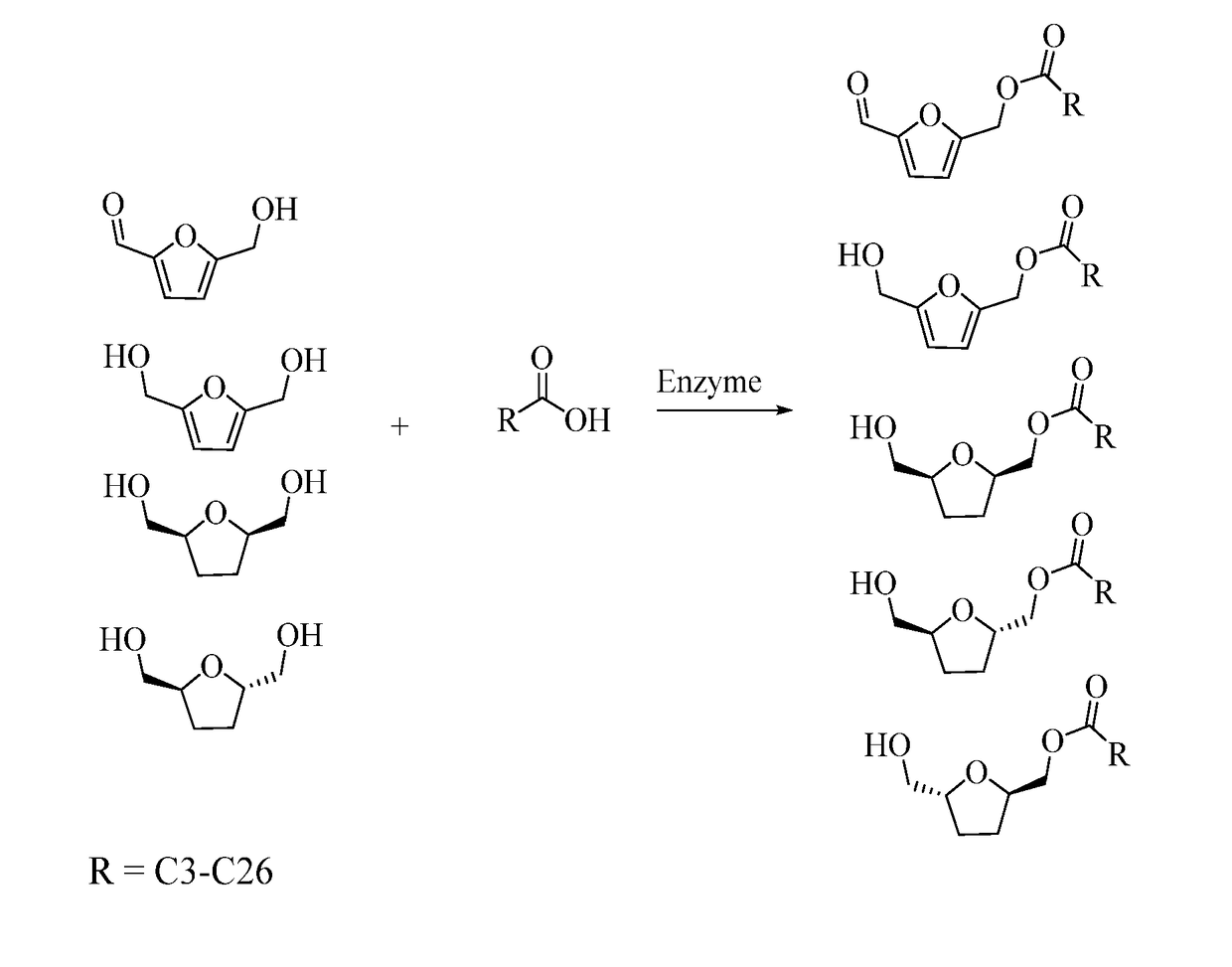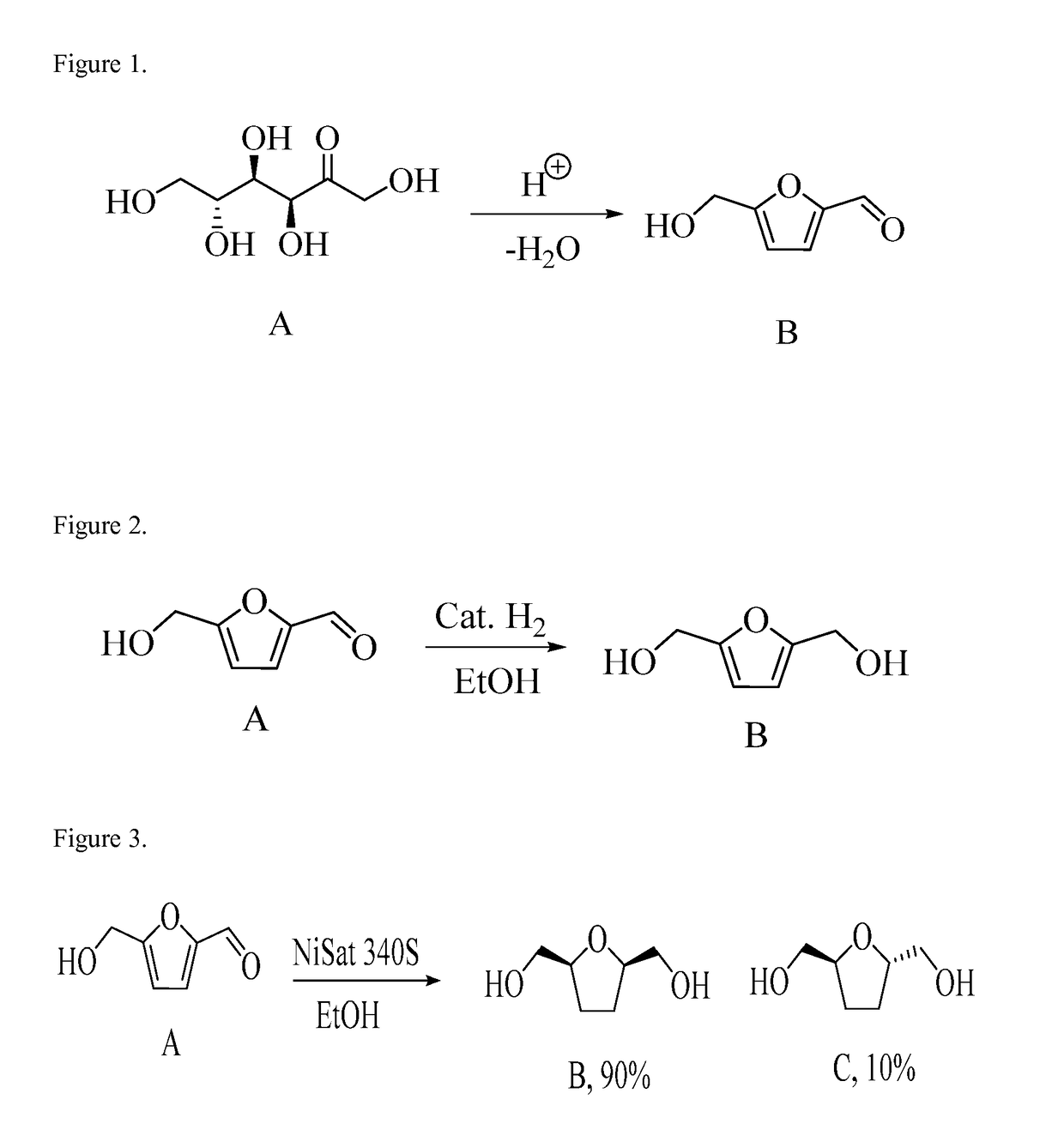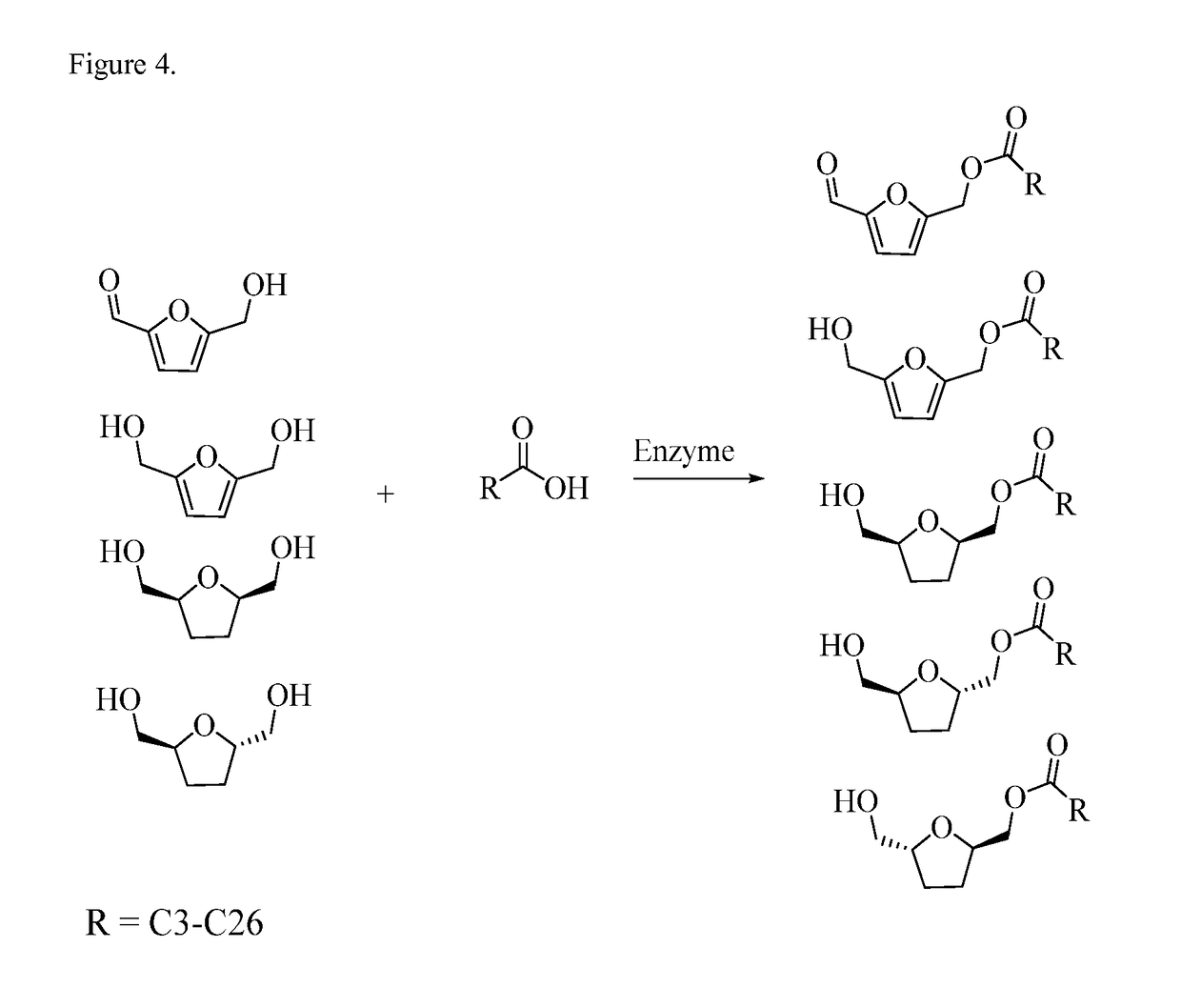Synthesis of Non-Ionic Surfactants From 5-Hydroxymethyl-2-Furfural, Furan-2,5-Dimethanol and Bis-2,5-Dihydroxymethyl-Tetrahydrofurans
a technology of ionic surfactants and hydroxymethyl-2-furfurans, which is applied can solve the problems of limited use as a chemical per se, hmf itself is rather unstable, and hmf tends to polymerize or or oxidize, and is not suitable for use in the field of amphiphilic compounds. , the effect of reducing the toxicity of amphiphilic compounds
- Summary
- Abstract
- Description
- Claims
- Application Information
AI Technical Summary
Problems solved by technology
Method used
Image
Examples
example 1
on of HMF / Oleic Mono-Esters (80-5676 LW, 85-5676 LW)
[0096]Sample of HMF was obtained from Industrial Chemicals group of ADM Research. Technical-grade oleic acid was purchased from Sigma-Aldrich (St. Louis, Mo.). Lipozyme 435 (granular immobilized lipase enzyme from Candida Antarctica B Lipase) was obtained from Novozymes (Pagsvaerd, Denmark). A reaction mixture was comprised of 225.6 g (0.8 mol) of oleic acid, 35.8 g of enzyme, and 132.1 g (1 mol) HMF. The mixture was heated to 70° C. under vacuum at 5 torr and agitated at 400 rpm. The reaction achieved 0.50% residual free fatty acid after 3 h. A sample of mixture was taken at 3 h and analyzed on a TLC plate. A Whatman Partisil K6, 5×10 cm, silica gel 60 Å TLC plate with a thickness of 250 μm was used. A mixture of hexane / ethyl ether=1 / 1 was used to develop the TLC plate. The developed TLC plate was sprayed with 5% sulfuric acid in methanol and then placed in a 110° C. oven for darkening of spots on the plate. TLC analysis of the re...
example 2
on HMF / Lauric Mono-Esters (90-5676 LW)
[0097]Laurie acid was also reacted with HMF. The lauric acid was sourced from Tokyo Chemical Industries (TCI). The reaction mixture was comprised of 200.3 g (1 mol) of lauric acid, 21.9 g of enzyme, and 132.1 g (1 mol) HMF. The mixture was heated to 60° C. under vacuum at 5 torr and agitated 400 rpm. The reaction reached 6.3% residual FFA after 21 h. The reaction mixture was filtered over a Whatman #40 filter paper to remove the enzyme. TLC analysis of the reaction mixture showed that the reaction was completed with small amount of FFA remaining. The filtered mixture (120 g) was then processed by short-path distillation to purify mono-esters and to remove residual fatty acids. This distillation was performed at 125° C., 230 rpm rotor speed, and 0.032 mb vacuum. The flow rate was set at 8 mL / min. At this temperature, 70.9 g of purified mono-esters was recovered and a very small amount of residual unreacted / FFA was distilled off. The temperature w...
example 3
on HMF / Capric Mono-Esters (91-5676 LW)
[0098]Another reaction was performed using capric acid to react with HMF. The capric acid (>98% purity) was sourced from Tokyo Chemical Industries (TCI). The reaction mixture was comprised of 113.7 g of capric acid, 20.1 g of enzyme, and 87.2 g HMF. The mixture was heated to 60° C. under vacuum at 5 torr and agitated 400 rpm. The reaction reached 7.5% residual FFA after 22 h. The reaction mixture was filtered over a Whatman #40 filter paper to remove the enzyme. TLC analysis of the reaction mixture showed that the reaction was completed with small amount of FFA and unreacted HMF material remaining. The filtered mixture (120 g) was then processed by short-path distillation to purify mono-esters and to remove residual fatty acids. The distillation temperature was lowered due to the greater volatility of the short-chain FA. This distillation was performed at 95° C., 230 rpm rotor speed, and 0.035 mb vacuum. The flow rate was set at 8 mL / min. 80.5 g...
PUM
| Property | Measurement | Unit |
|---|---|---|
| temperature | aaaaa | aaaaa |
| temperature | aaaaa | aaaaa |
| temperature | aaaaa | aaaaa |
Abstract
Description
Claims
Application Information
 Login to view more
Login to view more - R&D Engineer
- R&D Manager
- IP Professional
- Industry Leading Data Capabilities
- Powerful AI technology
- Patent DNA Extraction
Browse by: Latest US Patents, China's latest patents, Technical Efficacy Thesaurus, Application Domain, Technology Topic.
© 2024 PatSnap. All rights reserved.Legal|Privacy policy|Modern Slavery Act Transparency Statement|Sitemap



